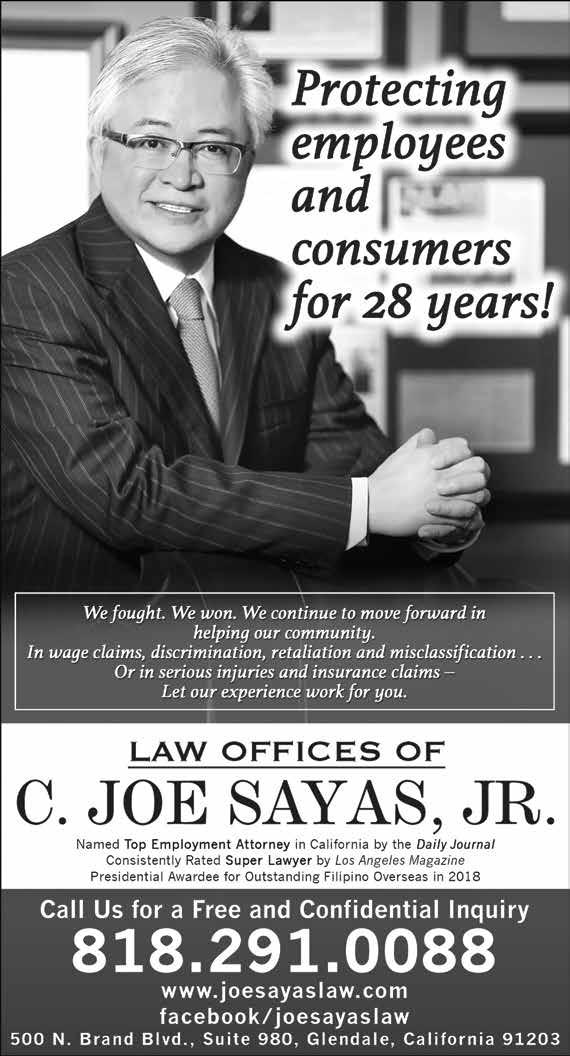
3 minute read
Personal medical debt in Los Angeles...
latter group. When one witness testifying during the May 11 hearing attempted to defend covid vaccination policies, Taylor Greene cited the number of reports to VAERS as evidence of the vaccines’ lack of safety.
That muddles the purpose of the database, Motta said, which gathers unverified and verified reports alike. It’s a signal, not a diagnosis. “It’s more like a smoke alarm,” he said. “It goes off when there’s a fire. But it also goes off when you’ve left an omelet on the stove too long.”
Advertisement
In a March hearing focusing on school reopening policies, Democratic members of the panel and a witness from a school nurses association frequently touted the important role covid vaccines played in enabling schools to reopen. Wenstrup offered generalized skepticism. “I heard we were able to get more vaccines for the children,” he said. “We didn’t know fully if they needed it. A lot of data would show they don’t need to vaccinate.”
Witnesses can eagerly play into vaccine-skeptical narratives. After a question from Taylor Greene premised on the idea that the covid vaccines “are not vaccines at all,” and alleging the government is spreading misinformation about their effectiveness, Makary suggested that while he was not anti-vaccine, it was PAGE A4 the same percentage of Angelenos as other public health concerns do, such as diabetes and asthma.
“We try to look at factors that affect people’s lives that are widespread, preventable, and impact not just our physical health but our mental and social health,” Shah said. “This makes medical debt one of the top public health problems.”
Medi-Cal, the state’s Medicaid program, has expanded coverage in recent years, notably to residents living in the county without legal permission. By 2024, approximately 92% of Californians under age 65 will be insured, the University of California-Berkeley Labor Center projected. Yet L.A. County’s study revealed that despite expanded insurance coverage through the Affordable Care Act and the covid-19 emergency, the prevalence of medical debt remained unchanged from 2017 to 2021.
Researchers cited an investigation by KFF Health News, “Diagnosis: Debt,” which discovered that more than 100 million of Americans, 41% of adults, are saddled with medical bills they cannot pay. That investigation drew largely on a nationwide poll designed to capture not just bills patients couldn’t afford, but other borrowing used to pay for health care as well.
By contrast, the county report analyzed an annual survey of Los Angeles County residents who reported having problems paying medical bills for themselves or anyone in their household in the prior 12 months.

The medical bills are often relatively small, but they can be burdensome for struggling households. In 2021, roughly 30% of adults with trouble paying medical debt owed less than $1,000. About half of those who took on credit card debt to pay off the bills or were unable to pay for necessities owed less than $2,000.
To alleviate the problem, the report recommends collecting and sharing data related to medical debt, enforcing fair billing and collection laws, and improving financial assistance programs where qualified patients can access free or discounted care. One idea is for the county to partner with debt relief organizations to buy up residents’ medical debt and retire it.
One such organization, the nonprofit RIP Medical Debt, buys medical debt for pennies on the dollar to provide rapid debt relief. Shah said the county could fund a program with RIP Medical Debt or one of its peers.
County supervisors are still being briefed on the report, said Becky Schlikerman, a spokesperson for the public health department.
Will Nicholas, the primary author of the report and director of the public health department’s Center for Health Impact Evaluation, noted that one of the biggest predictors of medical debt is a person’s health status. Those in poor health who have trouble paying medical bills are almost three times as likely to accumulate debt as their peers with excellent health, the report found.
“Just because someone happens to be sick and needs medical care, why should they suffer disproportionately from medical debt?" Nicholas said. “That seems like an injustice.”
While the uninsured bore the greatest burden, with about 26% facing medical debt, many insured patients also have debt. Nicholas said privately insured patients are financially vulnerable due to high out-of-pocket expenses, including copays and the share of bills not paid by insurance, which can be exorbitant for hospital stays and other services. Medi-Cal enrollees may accumulate debt by unknowingly accepting services not covered by the safety-net program, Nicholas said.
Shah said medical debt troubles him as a physician.
“I will say that it's incredibly concerning to me as someone who's taken an oath to do no harm that sick patients who are seeking health care to get better are being made sicker by the care they receive when they accrue medical debt,” Shah said. (Molly Castle Work/KFF Health News)
KFF Health News senior correspondent Bernard J. Wolfson contributed to this report.
This article was produced by KFF Health News, which publishes California Healthline, an editorially independent service of the California Health Care Foundation.







